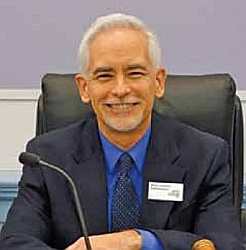Cotati
WHY Cotati voted NO to Fluoride in our Water
By Mark Landman, Cotati Councilman and Cotati Mayor, 2013
SOURCE: Sonoma County Gazette (September 2014)

As Cotati’s Mayor last year, I chaired the meeting in which our City Council assessed the question of fluoridation of our City’s water supply. After presentations from all sides, and much thoughtful discussion, we unanimously voted against fluoridation.
This decision was the result of a number of factors, but in the end, it was evident that there were better, more cost effective ways to provide dental care to those in need.
As we analyzed this issue, three key points helped lead me to my decision:
We Don’t Need to Take Fluoride Internally: It Works Topically
Water fluoridation started in 1945, long before we knew fluoride’s effects on tooth surfaces were topical, and that there was no need for systemic ingestion. If we knew then what we know now, it’s doubtful public water would’ve been fluoridated.
I’ve been around long enough to see that many ideas we once thought were beneficial ultimately turned out to be very harmful. Despite the best of intentions, MTBE in gasoline, which we believed would reduce emissions, harmed our groundwater. Flame-retardant chemicals in children’s pajamas, which we hoped would protect our children, turned out to be carcinogenic.
This is a constant cycle. We implement ideas based on what we know, with good intentions, and then as time passes we learn new facts and realize that we need to make adjustments. It’s in this ability to overcome our natural resistance to change, and to reset our course of action that we are at our best. We simply need to be willing to change our direction.
It appeared to me that this held true for water fluoridation. Water fluoridation struck me as a 1960’s answer to a 1950’s problem. Now that we’re living in the 21st century, we can find better solutions.
Is It Appropriate For Us To Prescribe A Medication To The Public?
As we listened to the presentation, it became clear fluoride was not like Vitamin D, a nutrient the body requires and that is routinely added to milk. Fluoride, much like arsenic, is present to some degree in groundwater, but is not required by the human body. Vitamin D is found in mother’s milk, fluoride is not.
Merriam-Webster’s dictionary defines medicine as “a substance that is used in treating disease or relieving pain, and that is usually in the form of a pill or liquid.” Dental caries is consistently described as a disease by dental authorities. With this in mind, it became evident we were being asked to consider the addition of a medicine to our water supply.
To support adding medicine to our water supply, there would have to be momentous need combined with a lack of other available options. That didn’t appear to be the case. Knowing that there were other ways of delivering fluoride, such as toothpastes, gels and varnishes, and respecting that many in our community had serious concerns about the long term health aspects of fluoride ingestion, the need to make such a unilateral decision wasn’t present. I felt people needed to decide for themselves, and for their children, what health choices they make.
This brought me to my final conclusion…
The Public Deserves to Choose For Themselves
It’s about freedom of choice. People should be able to decide for themselves to use fluoride. If they so choose, there are many options available. But with water fluoridation, families have no choice. I would’ve been putting those I represent in a position where they couldn’t avoid fluoride, because it would be in their drinking water, the water they bathe in, and the water they use in their gardens. As an elected official, that would’ve been an unacceptable choice.
Working towards reducing tooth decay in Sonoma County’s youth is a valuable goal. But after hearing from all sides, and carefully weighing the issues, my personal conclusion was that water fluoridation wasn’t the way to accomplish this. If we invest in other, safer, more effective paths to accomplish this, we can improve dental health care while respecting our communities’ right to choose.